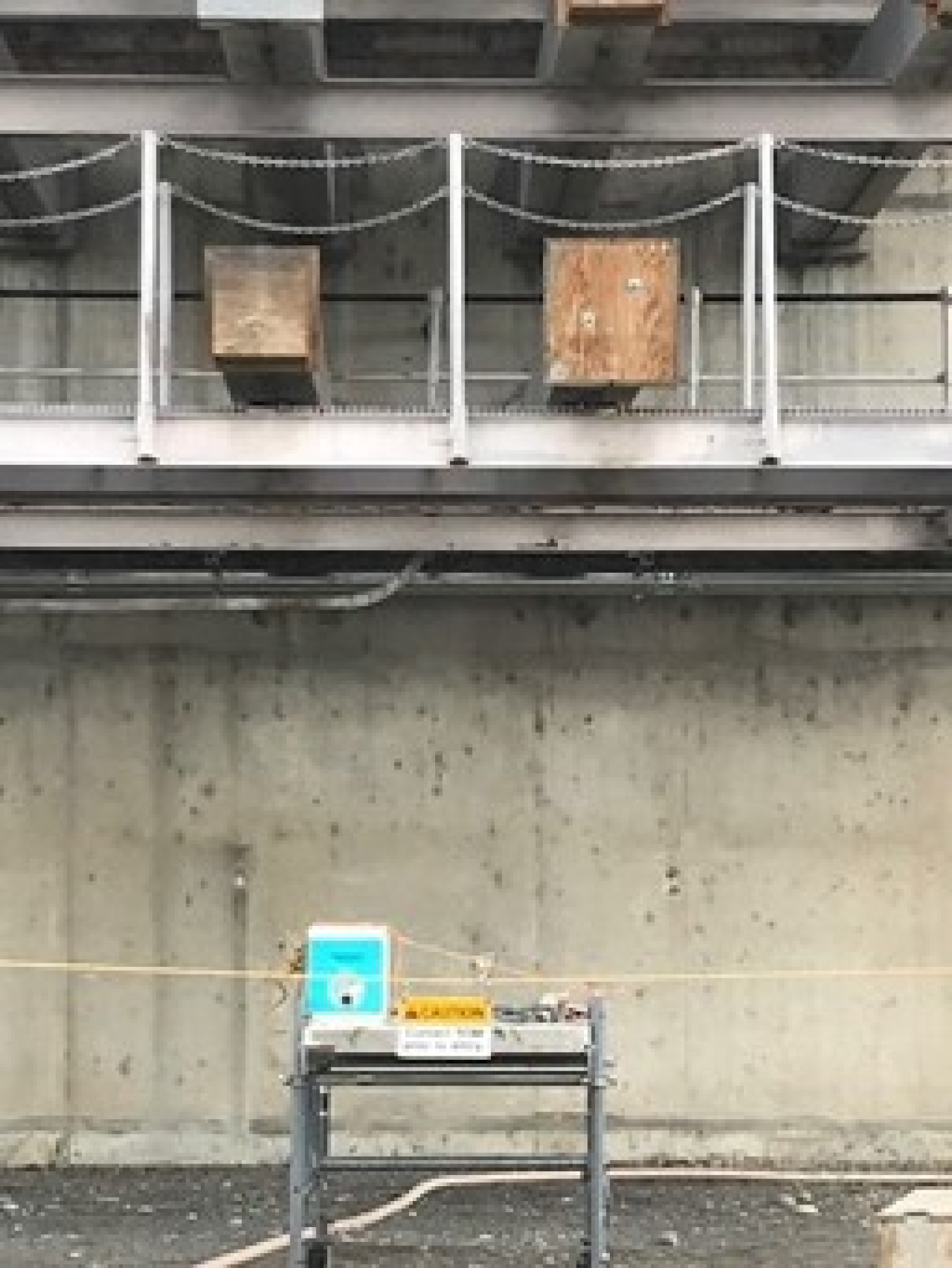The area near the Hanford Site’s former K Reactors is buzzing with activity as several environmental cleanup projects continue to reduce risk near the Columbia River.
Office of Environmental Management
July 26, 2022RICHLAND, Wash. – The area near the Hanford Site’s former K Reactors is buzzing with activity as several environmental cleanup projects continue to reduce risk near the Columbia River.
But that’s not the only thing that’s buzzing. While preparing some old equipment for removal earlier this spring, workers with EM Richland Operations Office contractor Central Plateau Cleanup Company (CPCCo) discovered a large colony of native bees.
The CPCCo team stopped work and contacted ecological experts with fellow site contractor Hanford Mission Integration Solutions to determine if the bees could be saved. The hives were located inside compartments of one of the structures, limiting access to remove the bees directly. The presence of asbestos also posed some potential hazards. After discussing several options, they decided to try to capture some of the bees when they naturally swarmed away from the hive. Bees swarm and begin looking for a new place to nest when the colony becomes overcrowded.
“We weren’t sure how well our plan would work, but we thought it was our best shot at success,” said Cynthia Synar, a planner with CPCCo and also a beekeeper. “Bees are vital to the health of Hanford’s ecosystems, pollinating the native grasses and other plants across the site’s semiarid shrub-steppe landscape.”
The team placed bee traps — or small boxes — baited with attractant near the structure and waited. In mid-May, a worker noticed a swarm near one of the bee boxes. Synar carefully placed the bees into the box and let them settle overnight. The next morning, she relocated them away from cleanup activities.
“We were so excited to be able to give them a new home,” Synar said. “They were so docile and easy to work with; they just went with the plan.”

With demolition activities on the structure set to resume later this summer, Synar hopes to keep the traps in place as long as possible or until the rest of the bees decide to relocate inside them.
“I’m impressed with the innovation of our joint contractor team to relocate these native bees,” said Paul Pak, head of the Richland Operations Office Environmental Compliance Division. “Projects like this also reinforce the importance of our wildlife management program to monitor and protect animals that call the Hanford Site home.”
To receive the latest news and updates about the Office of Environmental Management, submit your e-mail address.

